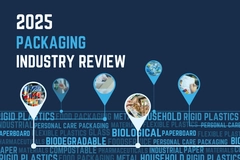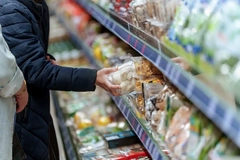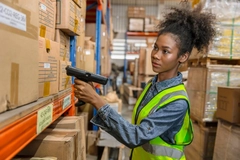Pack Expo 2024: Metsä Board talks circularization and business in changing US landscape
US packagers are expanding their businesses and improving sustainability practices to keep up with competition and potential regulatory changes. Unlike the EU, the US does not yet have emissions legislation for packaging on the federal level.
Nathan Pajka, sustainability manager at Metsä Board, tells Packaging Insights at Pack Expo 2024, November 3–6 in Chicago, US, that legislation to regulate packaging production emissions has been picking up in the US.
“California is requiring companies of a certain size to publicly report 2025 emissions data. That’s probably going to start catalyzing more companies to switch over to more renewable energies and to reduce their carbon emissions.”
Pajka identifies all of the Americas as a growth market and a region where Metsä can expand and continue to make sustainable packaging more global.
“We’re excited about doing that. And I think we’re just going to keep innovating, keep finding new solutions to whether it’s replacing plastic in situations, whether it’s further lightweighting of our board, further reducing the amount of raw material in our packaging.”
“We see domestic competitors starting to light-weight, reduce the amount of raw material in their board and reduce their emissions. People are looking at us and saying, they’re doing a pretty good job, it is possible. It is about leading by example.”
Renewable energy shifts
Availability and feasibility of biofuels presents a challenge of a company-wide shift to renewable energy, says Pajka.
“Some of our mills are still using peat and natural gas, fuels they've been using for a long time.”
Metsä switches from fossil-based to renewable energy for its packaging production.But Metsä has a lot of sustainability objectives with its main goal being working toward achieving its net zero goal by 2030.
“By 2030, in all of our production units, we will no longer use or purchase any fossil-based energy,” says Pajka.
“Our scope one, our scope two emissions will go to net zero by 2030. That’s something that we’re investing in and we’re communicating. It reduces the carbon footprint of our products, and helps our downstream value chain partners reduce their scope three emissions.”
Metsä is investing in its mills, by updating its equipment and finding efficiencies. These include production efficiencies, energy and water efficiency, as well as switching from fossil-based to renewable energy.
“We’ve been historically using some fossil fuels for a lot of our mills. So it’s switching things like peat, natural gas, oil, we already phased out coal, and just switched to renewable energy. And what we use for our renewable energy are our wood-based side streams from our production.”
“At the end of 2023, 73% of our total energy consumption came from wood-based renewable energy. So that’s what we use for our production energy,” adds Pajka.
Resource efficiency
Metsä has several sister companies operating under Metsä Group. “Our friends at Metsä Wood use about 60% of the tree for building materials, walls, flooring and beams. And then we use the next part of the tree, the pulpwood, for our paperboards,” says Pajka.
“Our friends at Metsä Tissue use it for tissue and grease-proof papers. And then Metsä Fiber, our other sister company, uses it to make pulp.Then the rest of the tree, the branches, the tops of the tree, the bark, any other side streams from our production process, we use all of that as our production energy.”Metsä’s products add no additional GHG emissions, says Pajka.
“And we use a lot of black liquor, too, all of the side streams from production. We collect all of that and then use it as our fuel. For all of the fuel that you use from your own biomass, it makes it circular.”
“It makes our production process more circular. And this is something that some people don’t quite follow or get maybe confused about,” adds Pajka
Burning wood creates carbon emissions. But Pajka asserts that the difference is that the GHG released when burning wood is the same carbon that that tree absorbed in order for it to grow. “So you’re not adding any new carbon to the atmosphere.”
“It’s biogenic carbon. It’s different from taking fossil fuels out of the ground and then releasing those into the atmosphere. It's all part of our circularity story.”
Commitments for infrastructure rebuild
According to Pajka, Metsä has been using its side streams as production energy for years. “And the mills here in the US, they’re old, it costs a lot of money to transition them. And you see a lot of people, a lot of our domestic competitors doing that and starting to include more renewable energy in their production.”
“But this operational procedure is not inherent like it is in Finland in our production. So our mills were built with this in mind. Domestic competitors, they’re just not quite there yet,” he adds.
“And it’s hard and it’s expensive to get there.”
Pajka says that to rebuild infrastructure nationwide, companies must commit to reducing their environmental impact, to reduce their carbon emissions.
“But I recognize that it’s not going to be feasible for everybody. If you have leadership like we do, that believes in this goal and is committed to achieving it, then that makes all the difference. Because you make trade-offs in other places that we’re willing to do it.”
By Natalie Schwertheim, with Louis Gore-Langton reporting from Pack Expo 2024











